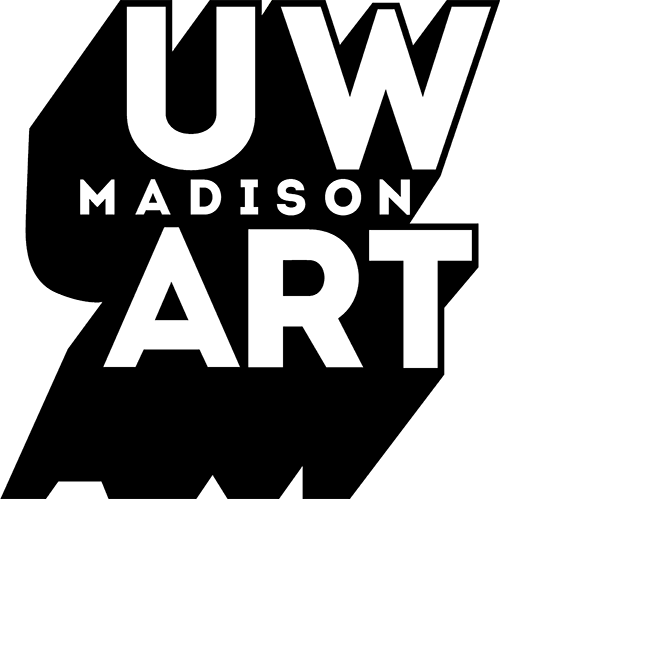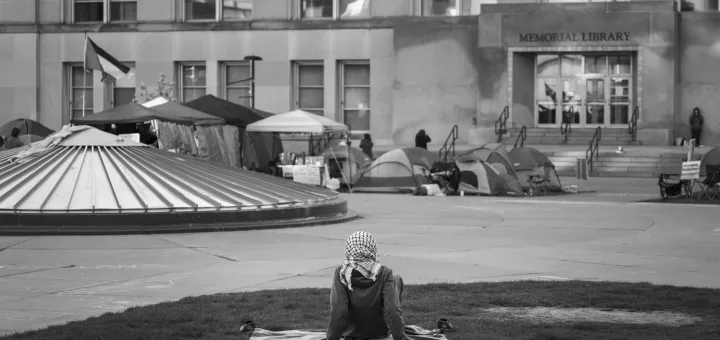In an image taken at the University of Wisconsin-Madison by Matthew Ludak, an MFA alumni and photojournalist, a single protester wearing a Palestinian Keffiyeh around their head is relaxing on the lawn facing the Palestine solidarity encampment. Behind the tents, Memorial Library—a major building and research repository—looms large.
There is a calmness to this image taken in the early hours of April 30, 2024 that betrays the violence that followed shortly after. What makes the image so startling perhaps, is that police raided the encampment the very next morning. State and city police descended began to forcibly removing tents.
Later on May 1, several officers pinned Dr. Samer Alatout to the ground during the police raid on UW-Madison’s encampment. An officer pressed their leg on Alatout’s shoulder blade while Alatout laid flat on his stomach. This technique of restraint—known as “Three Point Prone” used to neutralize a resisting body—overtook global imaginary when, in 2020, Officer Derick Chauvin used it on George Floyd in Minneapolis. Except Chauvin did not place his leg on Floyd’s arm—he placed it on his neck. Minutes later, Floyd was killed.
The distance between restraint and death is mere inches. The post-mortem diagnosis of Floyd’s deceased body fails to mention the histories that propelled that deadly encounter, pinning it to biological failures produced by pressure. It is no coincidence that Palestinian flags were visible at Black Lives Matter protests that followed.
In his own writing, Alatout asserts that the “bio-territorial” calls into question the separation of questions of land sovereignty and population within discourses of occupation. The university is an example of the failure of such a distinction, implementing its power through both land claims and through its surveillance and management of bodies. The impermanence of the UW-Madison encampment—or rather, the mobile nature of its structures—disturbs the image of the university as a site of settler power and perpetuity and reveals how it is an apparatus of occupation facilitating both land siege and political management of knowledge and bodies.
Territorial Rearrangements
The acceleration of humanitarian and ecological violence currently unfolding emerges through a longer process of settler colonialism that begins with the installation of defensive settler infrastructures. One of the most pressing parallels between the U.S. and Israel is their shared strategies of settler colonialism: deploying architecture, agriculture, and colonial property regimes to permanently transform the land.

